Sarcoidosis is an inflammatory illness affecting many different organs and organ systems. In most cases, inflammation is first noticed in the lungs and intrathoracic lymph nodes. The very condition is also characterized by the formation of noncaseating granulomas in the tissues affected by inflammation.
Sarcoidosis Pathophysiology
In spite of all efforts scientists have made, sarcoidosis remains a disease of unknown cause. Still, all the symptoms and signs as well as complications of the disease are easily explained by the inflammatory reaction of the affected organs and the formation of characteristic granulomas.

It is, however, shown that T-cells play a significant, if not crucial, role in the development of the disease. These cells are responsible for the propagation of excessive cellular immune reactions. Furthermore, patients suffering from sarcoidosis have an increased amount of TH 1 cytokines (interferon).
Finally, the amount of tumor necrosis factors as well as the number of its receptors is much greater in such patients compared to healthy individuals. All the mentioned drives to the conclusion that the immune system plays a significant role in the onset and further progression of the disease.
Sarcoidosis Symptoms and Signs
Presentation of sarcoidosis generally depends on the affected organ and the severity of inflammation. It is estimated that around 5% of all cases are diagnosed incidentally when a chest X-ray is performed for other purposes.
Around half of all patients have to deal with systemic complaints like fever, anorexia, and arthralgia.
Pulmonary sarcoidosis is characterized by dyspnea on exertion, chest pain, cough, and hemoptysis (coughing up blood). In the end stage of pulmonary sarcoidosis, the lungs are affected by severe fibrosis and symptoms and signs of the disease are quite severe.
In people in whom the skin gets affected clinical findings include erythema nodosum, lupus pernio, violaceous rash, osseous involvement, maculopapular plaques, etc.
Ocular manifestations develop in a form of anterior/posterior granulomatous uveitis, conjunctival lesions, scleral plaques, etc. If left untreated, some eye problems may eventually cause blindness.
If the heart is affected, one may eventually develop heart failure which usually results from cardiomyopathy. Heart block and sudden death may occur as well.
Finally, neurological manifestations in people suffering from sarcoidosis include cranial nerve palsies, hypothalamic/pituitary dysfunction, and lymphocytic meningitis.
Sarcoidosis Treatment
The condition is treated with potent anti-inflammatory drugs. The cornerstones of the therapy are corticosteroids. Apart from corticosteroids patients may also be prescribed methotrexate, chloroquine and hydroxychloroquine, cyclophosphamide, azathioprine, chlorambucil, cyclosporin and infliximab. Which of the mentioned drugs is going to be prescribed depends on the affected organ/organ system and the severity of the condition.
- Lung involvement in sarcoidosis is seemingly invariable, with up to 95% of patients manifesting some form of pulmonary disease during the course of their lifetime. However, the natural history of sarcoidosis in the lung is quite variable and spans the spectrum from spontaneous resolution to advanced fibrocystic disease. Fortunately, in most cases, there is more of a propensity for the former and more benign clinical course. However, in about 5% of cases, permanent severe pulmonary dysfunction occurs, which accounts for most of the morbidity and mortality seen with the disease.
- Sarcoidosis is characterised pathologically by non-caseating granulomas and it is the sequelae of these that determine the clinical manifestations of the disease. Patients who progress to develop stage IV fibrocystic disease commonly manifest physiologically with varying degrees of restrictive and obstructive disease and a decreased diffusing capacity of the lung for carbon monoxide.
- Pulmonary hypertension (PH) is an increasingly recognised complication of sarcoidosis with a reported prevalence between 1 and 28% of all patients at rest and up to 43% with exercise. PH most commonly occurs in association with advanced stage IV disease, but can also occur in the context of relatively normal lung function and preserved parenchymal architecture. Patients with recalcitrant dyspnoea and normal left ventricular function have a higher reported PH prevalence of ?53%.
- LTx has evolved into an important therapeutic option for many patients with various forms of advanced lung disease, including sarcoidosis. Based on data from the International Society of Heart and Lung Transplant (ISHLT), sarcoidosis represents 2.6% of all conditions for which transplants have been performed, compared with 31% for idiopathic pulmonary fibrosis (IPF), the most commonly transplanted fibrotic disorder.
- LTx carries with it a significant risk of both morbidity and mortality and, therefore, as for all diseases, should only be considered for patients who have failed all other therapeutic modalities. In the context of sarcoidosis, transplantation is reserved for those patients with advanced fibrocystic disease in whom there is no possibility of spontaneous resolution and who have previously failed medical therapy. While it is hoped that transplantation will result in an improved quality of life, conceptually, the timing of the procedure is mostly determined by when it is deemed to confer a survival advantage.
Unfortunately, the advanced stage of the disease, especially advanced pulmonary fibrosis is life-threatening and inevitably leads to death unless patients undergo lung transplantation.


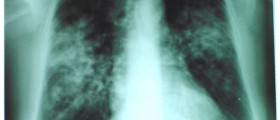






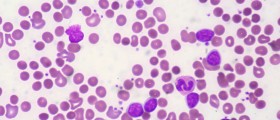



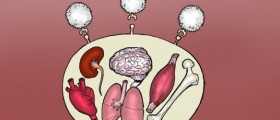
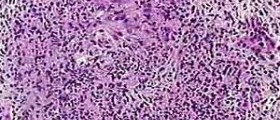

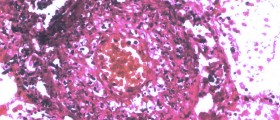
Your thoughts on this
Loading...